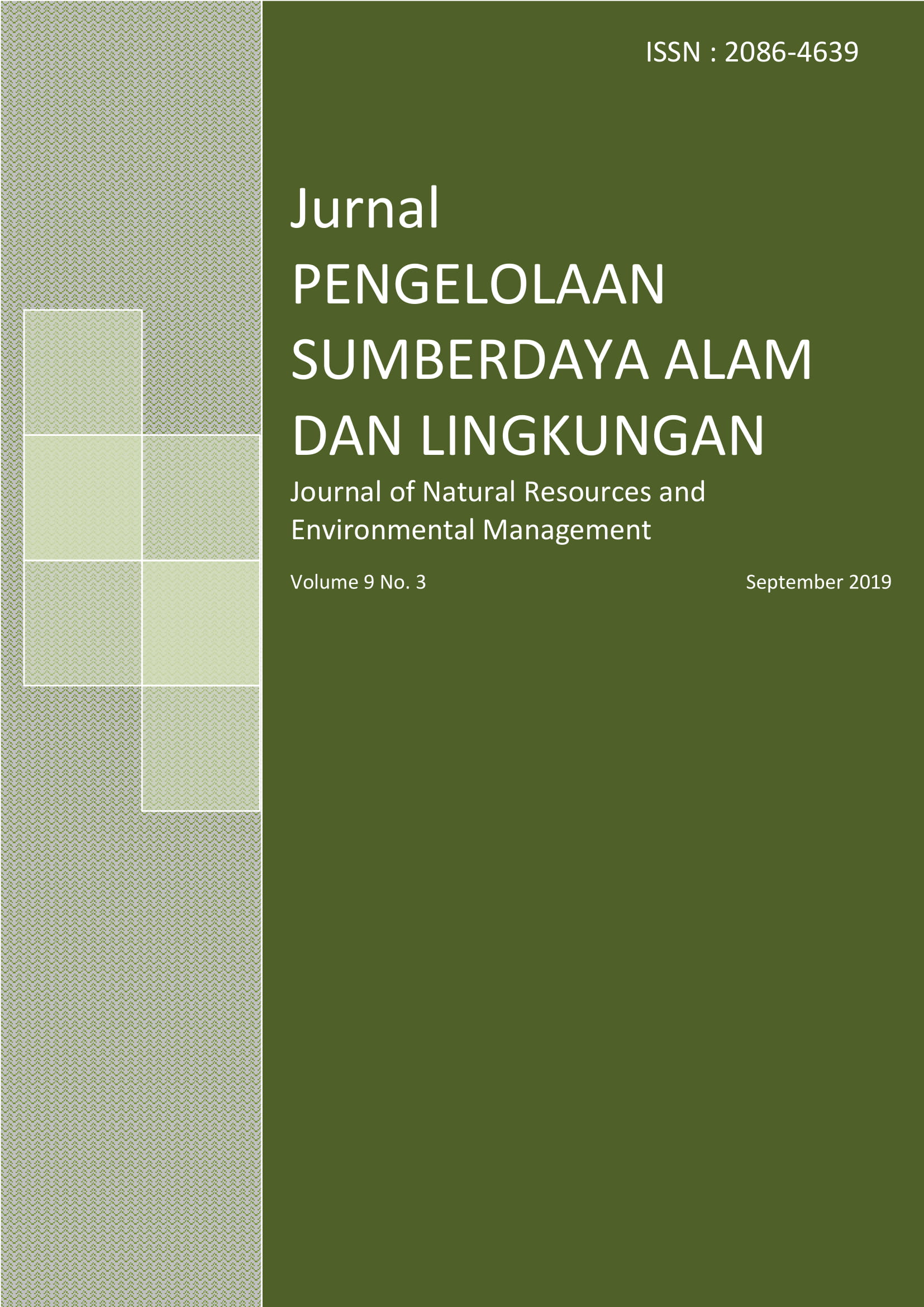Adsorptive Removal of Mercury by Zeolites and Montmorillonite
Abstract
The environmental pollution by the drainage containing heavy metals such as Hg is a serious problem in mining activities in Indonesia. We examined the effect of coexisting thiourea on the adsorptive removal of Hg by zeolites and montmorillonite. To a 100 mL of 10 mg/L (0.05 mM) HgCl2 solution in the absence and presence of 0.5 mM thiourea, different amounts of zeolite (A4, P or mordenite) or montmorillonite was added, shaken for 24 h, centrifuged, and supernatant Hg2+ concentration was measured. In the absence of thiourea, the ratio of the negative charges in the adsorbents to the positive charges in Hg2+, Ads/Hg ratio, needed to attain >80% Hg2+ removal were >70 for mordenite, >1625 for P, >600 for A4, and montmorillonite showed no Hg2+ adsorption. In contrast, in the presence of thiourea, nearly 100% removal was attained at lower Ads/Hg ratios: the ratios were 1 for montmorillonite, <10 for P and <18 for A4; the presence of thiourea had little effect for mordenite. These results indicate that Hg2+-thiourea complex has extremely high adsorption affinity for negative charges of montmorillonite, A4 and P, and the complex can fully penetrate into the interlayer space of montmorillonite. However, with increasing the Ads/Hg ratio, the Hg2+ removal percentage for montmorillonite, A4 and P decreased. Therefore, for the effective removal of Hg2+ in the presence of thiourea, the choice of adsorbents and the dose of the adsorbents should be carefully determined.
References
Attari M, SS Bukhari, H Kazemian and S Rohani. 2017. A low-cost adsorbent from coal fly ash for mercury removal from industrial wastewater. J. Environ. Chem. Eng. 5: 391–399.
Babel S, Kurniawan TA. 2003. Low-cost adsorbents for heavy metals uptake from contaminated water: A Review. J. Hazard. Mater. 97: 219–243.
Botoman L, Shukla E, Johan E, Mitsunobu S, and Matsue N. 2017. Sorbent-embedded sheets for safe drinking water in developing countries. a case study of lead(II) removal by a zeolite-embedded sheet. J. Water Health.
Johan E, Yamada, Munthali MW, Kabwadza-Corner P, Aono H, Matsue N. 2015. Natural zeolites as potential materials for decontamination of radioactive cesium. Procedia Environ. Sci. 28: 52‒56.
Kurniawan TA, Chan GYS, Hung Lo W, Babel S. 2006. Comparisons of low-cost adsorbents for treating wastewaters laden with heavy metals. Sci. Total Environ. 366: 409‒426.
Ministry of Energy and Mineral Resources of the Republic of Indonesia. 2015. Executive summary (data updates and mineral resource balance status 2015)
Nagajyoti PC, Lee KD, Sreekanth TVM. 2010. Heavy metals, occurrence and toxicity for plants: A review. Environ. Chem. Lett. 8: 199‒216.
Paundanan M, Riani E, Anwar S. 2015. Heavy Metals Contamination Mercury (Hg) and Lead (Pb) in Water, Sediment and Torpedo Scad Fish (Megalaspis cordyla L) in Palu Bay, Sentral Sulawesi). Jurnal Pengelolaan Sumberdaya Alam dan Lingkungan. 5(2): 161-168.
Pleysier J, Creamers A. 1975. Stability of silver thiourea complexes in montmorillonite clay. J. Chem. Soc. Fareday I. 71: 256–264.
Pleysier J, Juo ASR. 1980. A single-extraction method using silver-thiourea for measuring exchangeable cations and effective CEC in soils with variable charges. Soil Sci. 129: 205–211.
Simbolon AR, Riani E, Wardiatno Y. 2014. Health Risk Assessment of Heavy Metal Pollution in Water, Sediment, and Scallop (Placuna placenta) at Tangerang District Littoral. Jurnal Pengelolaan Sumberdaya Alam dan Lingkungan. 4(1): 75-83.
Tripathi A, Ranjan MR. 2015. Heavy metal removal from wastewater using low cost adsorbents. J. Bioremediation Biodegrad. 6: 1‒5.
Wang J, Feng X, Anderson CWN, Xing Y, Shang L. 2012. Remediation of mercury contaminated sites. A review J. Hazard. Mater. 221–222: 1‒18.
Authors
Authors who publish with this journal agree to the following terms:
- Authors retain copyright and grant the journal right of first publication with the work simultaneously licensed under a Creative Commons Attribution License that allows others to share the work with an acknowledgement of the work's authorship and initial publication in this journal.
- Authors are able to enter into separate, additional contractual arrangements for the non-exclusive distribution of the journal's published version of the work (e.g., post it to an institutional repository or publish it in a book), with an acknowledgement of its initial publication in this journal.
- Authors are permitted and encouraged to post their work online (e.g., in institutional repositories or on their website) prior to and during the submission process, as it can lead to productive exchanges, as well as earlier and greater citation of published work (See The Effect of Open Access).






